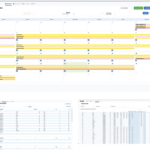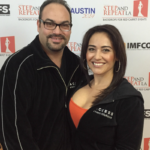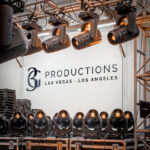“Part of our vision which was developed in the mid 1990s was to become a global company. In order for us to achieve that, we needed to be near to our customers, understand their requirements and grow with them.” So says Jon DeSouza, president and CEO of Harting USA. This explains the reasoning behind Harting opening up a branch in the USA back in 1986, and their continuous growth all over the planet for that matter.
The History
 Harting is a family-based company that has been in the business of making reliable electrical connectors of all types since 1945. To date they have expanded to all the continents and despite their growth, I get the feeling I am talking to nice people in a mom and pop company. Owners Dietmar and Margrit Harting head the company in cooperation with executive staff and their two children: Philip Harting is active as Senior Vice President Connectivity & Networks, while Maresa Harting-Hertz is Senior Vice President Finance and Purchasing. The Hartings ensure that the family line will be handed down through the next generations, continuing the chosen path of dealing personally with their clients.
Harting is a family-based company that has been in the business of making reliable electrical connectors of all types since 1945. To date they have expanded to all the continents and despite their growth, I get the feeling I am talking to nice people in a mom and pop company. Owners Dietmar and Margrit Harting head the company in cooperation with executive staff and their two children: Philip Harting is active as Senior Vice President Connectivity & Networks, while Maresa Harting-Hertz is Senior Vice President Finance and Purchasing. The Hartings ensure that the family line will be handed down through the next generations, continuing the chosen path of dealing personally with their clients.
I first started using their connectors in the entertainment business back in the early 1980’s. Pani fixtures (made in Austria) that included projectors and spotlights came with these well-recognized rectangle shaped multi-connectors. At that time the connectors were also largely utilized in Australia as a standard on their multi-connectors that fed lamp bars to dimmer racks. They were simple to connect and easy to repair should there ever be a fault due to the rigors of constant road use. The Japanese soon found these connectors useful in show business, as was evidenced by what I was seeing with my rental gear in every town. I was wondering why I rarely saw them being used in the American market. That was until I ventured into their facility in Elgin, Illinois to see what goes on there. That’s when I realized I probably do not use much electrical gear that does NOT have a Harting connector on it somewhere.
 But let me digress here. In the mid-1980’s, Harting obtained a large client in the United States. They first opened an office in Hoffman Estates, IL. so they could be near their client. In turn they started making tons of coaxial cables as well. As business boomed rapidly, they outgrew their facility. A decision was made to build a new facility in Elgin in 1997. This space is packed with over 100 full time employees now. They achieved this growth through determination and customer support and have no plans to settle down. In fact, DeSouza predicts they will double their size by the year 2020.
But let me digress here. In the mid-1980’s, Harting obtained a large client in the United States. They first opened an office in Hoffman Estates, IL. so they could be near their client. In turn they started making tons of coaxial cables as well. As business boomed rapidly, they outgrew their facility. A decision was made to build a new facility in Elgin in 1997. This space is packed with over 100 full time employees now. They achieved this growth through determination and customer support and have no plans to settle down. In fact, DeSouza predicts they will double their size by the year 2020.
 The Connectors
The Connectors
But what goes on in this facility, you may ask? First off, I walk in to tour the facility and see on display the hundreds of various connectors they make. I’m quickly given an education on different types and what their uses are. They make a modular series of mixed connectors, “Han® Modular”, which is their fastest growing product line. These are used for any combination of media from communication signals and fiber optics to high power, high current power connections. Think of the size of the connectors that are required to connect railway cars to each other. Yes, that’s Harting USA as well. Common applications of their products include machinery at plants, robotics, transportation and energy grids.
They make a series of board mounted connectors called “Device Connectivity Products.” Many of these are utilized inside the theatrical moving lights and computers we use to operate them. They make the mezzanine card based ribbon connectors to connect various PC boards as well as constantly updating their offering with new slick devices. There are plastic Molded Interconnect Devices, which essentially are 3-dimensional molded circuit boards for applications where traditional circuit boards are not optimal. Harting is not complacent with the products they have already manufactured either, opting to continuously look at ways to improve their lines. They offer a new connector called the “Yellock,” which connects two pieces without any side levers to snap in place. It functions in a manner similar to a seat belt. They recently devised a new “har-flex®” product. Connectors for circuit boards that can be plugged in vertically, parallel or even stackable. These connectors have a ribbon cable terminated versions to provide board to cable connections as well.
Within their “har-flexicon®” product line they provide board mounted high density ‘board to wire’ connectors that few others can supply. Another new connector they are utilizing in the market is the PushPull family.
The PushPull equipment interface provides a compact outdoor rated solution for a safe, shock and vibration resistant connection.
One of the largest in their line of connectors is the DIN product family. A well-established industry standard from Germany, these board mount connecters are used to connect plug-in cards to a backplane. Embedded computers and video machines use numerous versions of these connectors. They have been around the electronics world for a long time so we asked DeSouza why they haven’t been upgraded over time. He responds, “DIN are probably the most reliable board connectors in the market place. They are a time-tested product in broadcast and show business applications. For a lot of customers, the need for higher speed is there, so therefore we’ve had to move away from them at times. But overall, especially with the military market, they do not need anything else.”
Value-Added Business
So do they actually have a factory that makes the connectors in Elgin? No, those come from various parts of the globe including China, Romania and Switzerland. They get several pallets of connectors from their German counterparts weekly. But that’s not saying there is not a huge factory and warehouse at this U.S. facility. What they do offer is support for many of the ancillary needs that come with selling connectors. They meet with customers to offer them solutions to meet their fabrication needs. Clients show up on their doorstep with an idea, perhaps a new invention, but they need some help. This is along the line of “Here’s my design, can you build this?” Harting can design them new backplanes (think motherboard) as well as fabricate the custom connector necessary for this invention. Harting helps the buyer by offering great rates for finished products. For instance if you are buying the connectors and cable from them in the first place, why not have them connect the two at a fairly inexpensive rate then paying a third party or an employee who may not perfect the job? Same with adding connectors to the backplane, a tough job best left to the experts who do this day in and out.
The back assembly room and warehouse are a joy to look over. Besides keeping millions of dollars worth of inventory ready to ship at any time, they have a plant where materials and connections are made and tested. The place is sterile-looking, and even the employees wear white lab coats at their workstations. I would have no problems putting food down anywhere in this place and eating it later. There are about 25 people in the actual manufacturing department. They operate solder machines as well as press fit machines for solder-less connections. A machine called a Robat inspects new pieces for shorts while checking that there are no bent pins or bad connections in any solder joint.
Pick and place machines are utilized to attach fine parts to a circuit board. Finally, there are workstations where employees crimp wires and do tasks that the machines simply do not do. Building custom wiring harnesses is just another task Harting USA looks after.
Because of their expertise Harting deals with the military quite a bit. As a result they are ITAR Professional Certified, assuring employers that an individual has an expert working knowledge of exporting and importing under the U.S. Department of State Directorate of Defense Trade Controls’ (DDTC) International Traffic in Arms Regulations. Harting must keep a secure facility because of the government contracts it holds.
Words from the Wise
Jon DeSouza tells us his company’s theory for successful company relations and how he plans to move ahead in the future. They can advance easily because they are not competing against existing technology, instead they are opting to introduce new technology to the market place, which he does admit is in need of.
“We educate our customers, explain what the new technology we come up with can do for them. There is ample amount of opportunity for growth in various market places.
I inquired why other professional fields have glommed onto the idea of using multi-connectors to feed power, signal and data to a specific piece of gear, yet the entertainment lighting business does not appreciate that yet. He replies, “These are not seen so much in the lighting world because of limitations in technology. But that is changing.” If you look now, companies are manufacturing fixtures that all speak the same language of digital protocol. The fixtures are all recognizing power fed to them and adapting. Something may replace DMX before we know it.
In a perfect world all fixtures would adapt to a universal connector and accept any voltage from 90-240. But we are not far off from having multi-connectors that deal with AC, signal flow as well as RDM, a way for lights and controllers to talk back to each other. This isn’t far off. Companies are now making raceway bars to mount in their trusses. These raceways take one multi-connector in and have power and DMX outputs spaced every 12 inches or so. This eliminates the need for long AC lines or data cables between fixtures. I’ve seen this in action lately and it works great. Why bother with individual long data cables or truss snakes let along hundreds of five-foot jumper cables in a light rig? Broadcast Systems have adapted to this technology in a big way. How far behind can lighting be?
In closing we ask Jon DeSouza, how a connector company can shape the future of technology? “Connectivity is everywhere. You see it everywhere in show business as well as transportation. It is an evolving business. In the past we only cared about getting power to a device. Now they are needed to control data and signal as well.” Why plug in three lines when you can opt for one is what I’m thinking. If I were a lighting vendor I would certainly look into getting some advice from Harting USA on what they can do for your gear and connectivity in the future.
Company Snapshot
Harting USA
President and CEO: Jon DeSouza
When Founded: 1986
Where Based: Elgin, IL
Parent Company: Harting Technology Group, Espelkamp, Germany, founded in 1945
More Info: www.harting-usa.com, www.harting.com


